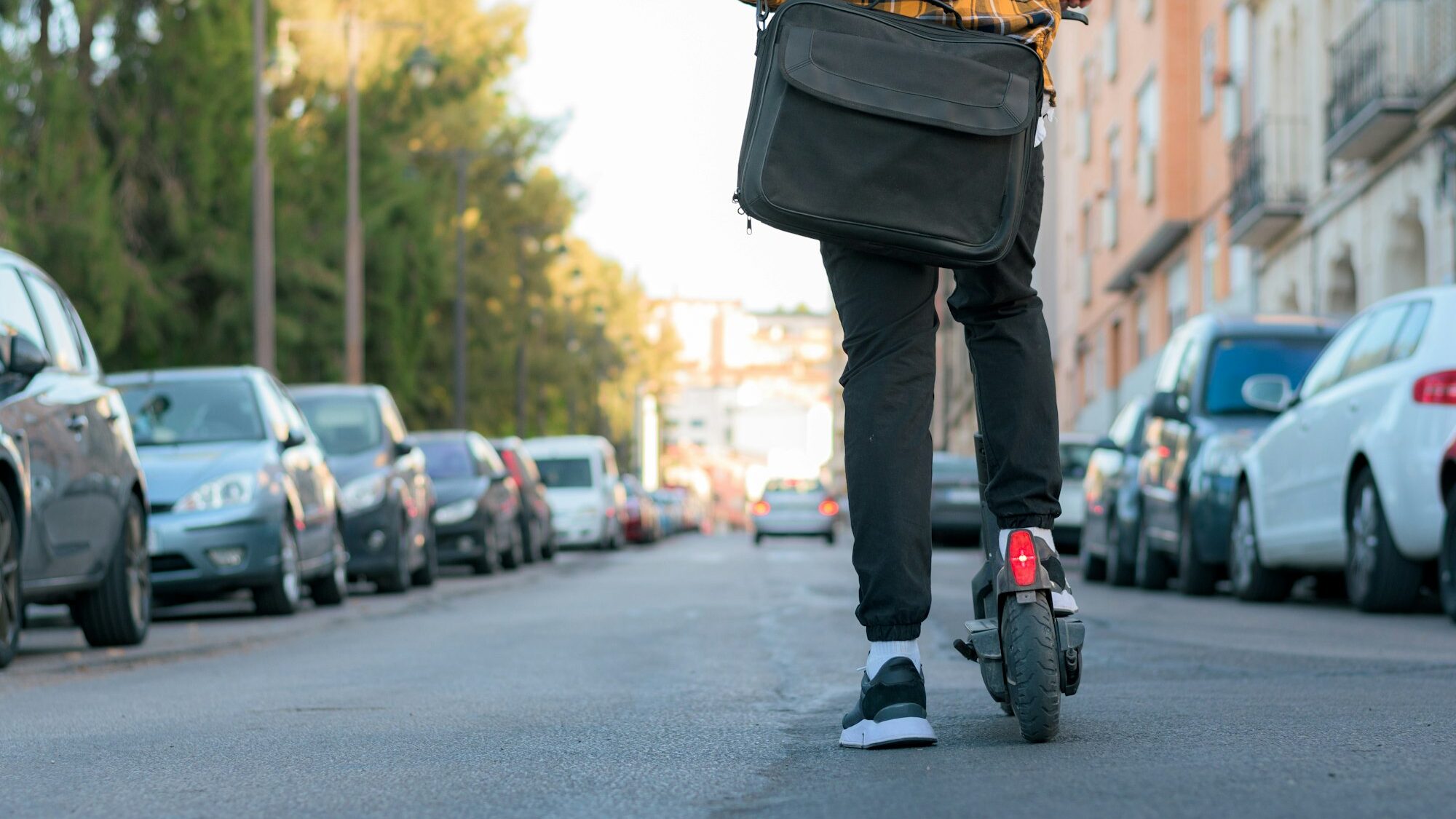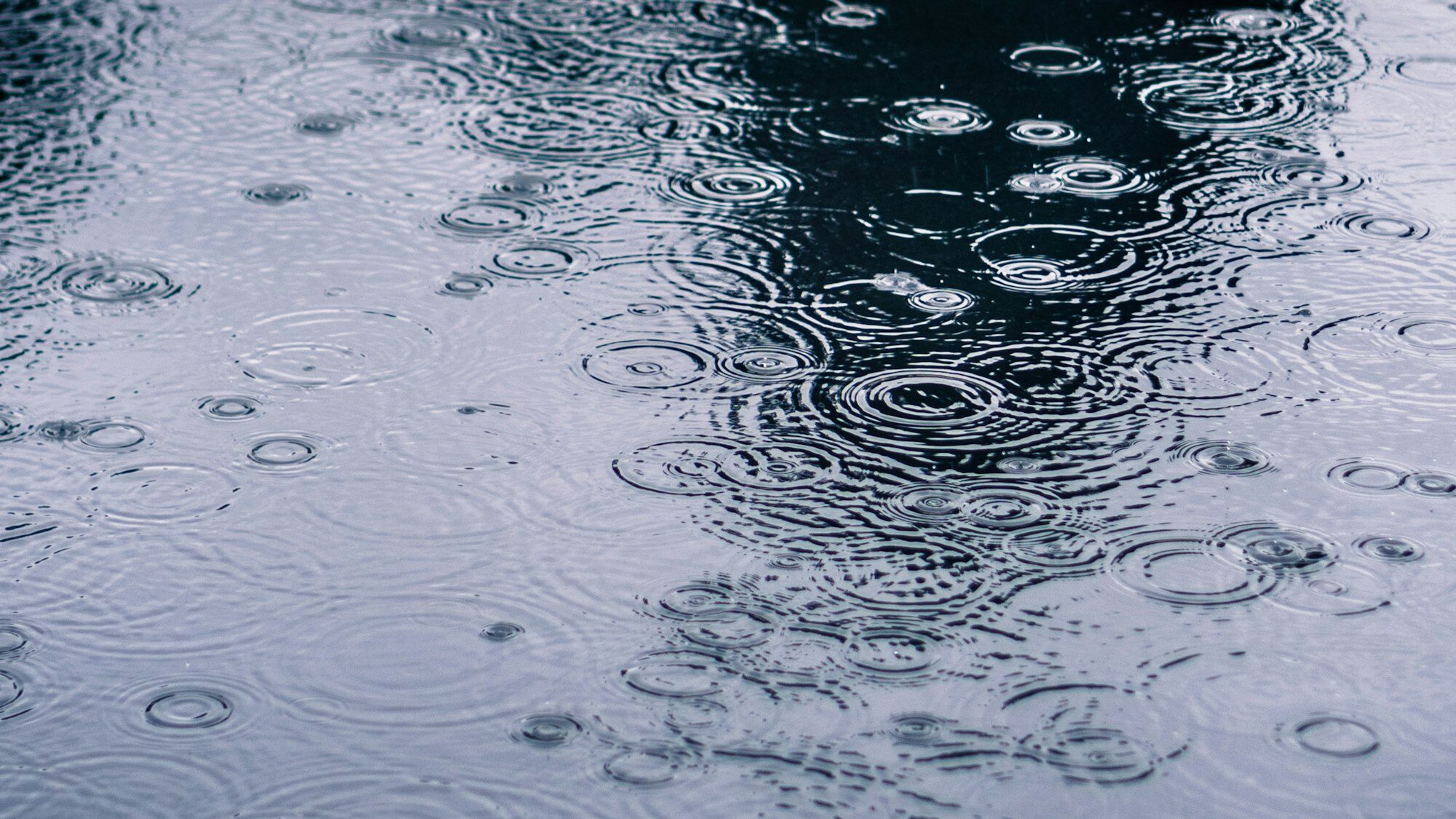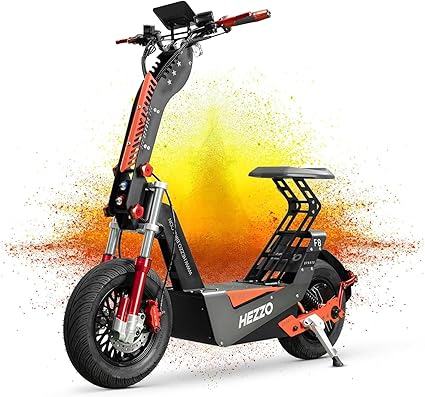As electric scooters become an increasingly popular mode of transportation, one critical question crosses every prospective owner’s mind: are electric scooters waterproof? Understanding the water resistance capabilities of scooters is essential, especially if you plan to ride or store your scooter in wet conditions. In this article, we’ll dive deep into the intricacies of water resistance in e-scooters, explore how to interpret IP ratings and provide invaluable tips for riding and maintaining your scooter in the rain.
By the end of this article, you’ll know exactly how to choose the best waterproof scooter models, how to maintain your scooter in wet conditions, and the ultimate practices for storing it safely during rainy weather. Let’s get started!

Understanding Water Resistance in Electric Scooters
When considering whether electric scooters are waterproof, it is vital to understand the difference between being waterproof and water-resistant. While many scooters come with water resistance, they are not necessarily waterproof. Water resistance generally means that the scooter can handle light rain, occasional splashes, or wet road surfaces without immediate damage.
Types of Water Resistance
- Light Water Resistance: These scooters can handle small splashes and light drizzles. They are not ideal for riding in moderate or heavy rain.
- Moderate Water Resistance: These scooters can cope with moderate rainfall and wet conditions for short durations. They offer a higher level of protection but still have limitations.
- High Water Resistance: Scooters with high water resistance are built to endure more severe weather conditions, including heavy rain, but usually still should not be submerged in water.
Water Resistance vs. Waterproof
It’s important to note that water resistance means the scooter has protective measures against water ingress to a certain extent, whereas waterproof means the scooter can withstand complete submersion in water. Most scooters on the market are not waterproof but offer varying degrees of water resistance depending on the design and build quality.
Impact on Usage and Storage
- Scooters with light water resistance might not be suitable for frequent rainy weather. Consider dry storage options.
- Riding them during occasional showers might be fine for scooters with moderate to high water resistance, but consistently heavy rain should still be avoided to prolong the scooter’s lifespan.
- Always ensure proper drying and maintenance after exposure to wet conditions to prevent long-term damage.
By recognizing the level of water resistance, you can make informed decisions on how best to use and store your scooter, ensuring its longevity and reliability. Next, let’s investigate the technical aspects by understanding electric scooter IP ratings.

Electric Scooter IP Ratings Explained
To understand how water resistance is measured, it’s essential to be familiar with IP ratings. IP, or Ingress Protection, ratings are standardized codes that indicate the level of protection an electrical device has against dust and water. These ratings provide valuable insights into how well a scooter can withstand various environmental conditions, including moisture.
What Do IP Ratings Mean?
An IP rating consists of two digits. The first digit represents the protection level against solid particles like dust, while the second digit indicates the protection level against liquids, particularly water. For instance, an IP54 rating has the following implications:
- First Digit (5): Protection against limited dust ingress. The scooter is “dust protected.”
- Second Digit (4): Protection against water splashes from any direction. The scooter is “water splash resistant.”
Common IP Ratings in Electric Scooters
Here are some of the common IP ratings you might encounter scooters and what they signify:
- IP54: It offers dust protection and can handle water splashes from any direction. It is suitable for light rain and minor water exposure.
- IP65: Provides higher dust protection and can withstand low-pressure water jets from any direction. Better suited for more intensive weather conditions.
- IP67: Allows for complete dust protection and can endure temporary submersion in water up to 1-meter depth for a short period. This rating is suitable for heavy rain and severe conditions but is still not ideal for prolonged submersion.
Choosing the Right IP Rating
When selecting a scooter, consider the typical weather conditions in your area and how often you plan to ride in the rain. If you expect to encounter frequent wet conditions, opting for a model with a higher IP rating, like IP65 or IP67, is advisable. This ensures better water resistance and longevity of the scooter.
Understanding IP ratings helps you choose which scooter can handle your specific environmental challenges. Armed with this knowledge, you can confidently select a model that balances performance and durability.

Riding Electric Scooters in Rain: What You Need to Know
Riding scooters in the rain can be challenging and potentially hazardous if proper precautions are not taken. Although many scooters offer water resistance, it is crucial to understand the limitations and safety measures to ensure a safe and enjoyable experience. Here, we’ll cover essential tips and best practices for riding scooters in wet conditions.
Assessing Weather Conditions
- Light Rain: Most scooters with a decent IP rating can handle light rain. Ensure the ground is not too slippery and avoid deep puddles.
- Heavy Rain: Even scooters with higher water resistance may struggle in heavy rain. Consider postponing your ride to avoid risks.
- Storms: It is generally unsafe to ride during storms due to potential visibility issues and the risk of strong winds. Seek shelter and wait for calmer conditions.
Riding Tips for Wet Conditions
To ensure your safety and the longevity of your scooter, follow these riding tips when navigating wet environments:
- Slow Down: Wet surfaces reduce traction. Ride at a slower speed to maintain better control of the scooter.
- Avoid Puddles: Puddles can hide deep potholes or hazards, which can cause immersion in water, reaching internal components.
- Braking: Wet brakes are less effective. Start braking earlier than usual to allow for longer stopping distances.
- Visibility: Wear a bright, reflective jacket to increase your visibility to other road users. Rain can significantly reduce visibility.
- Protect Electronics: Make sure all ports and battery compartments are securely closed to prevent water ingress, risking sensitive electronic components.
Post-Ride Care
Once you’re done riding in rainy conditions, proper care is essential to keep your scooter in tip-top shape:
- Dry Thoroughly: Use a dry cloth to wipe down your scooter, especially around the electronic components.
- Check the Brakes: Ensure the brakes are dry and functioning correctly before your next ride.
- Store in a Dry Place: Avoid leaving your scooter in wet environments. Always store it in a dry, covered area.
By following these guidelines, you can safely enjoy riding while minimizing the risk of damage or accidents. Next, let’s explore some of the top waterproof scooter models available on the market to help you make an informed decision.

Top Waterproof Electric Scooter Models
Selecting a high-quality scooter with excellent water resistance is crucial for those who anticipate frequent rides in wet conditions. Below, we outline some of the best waterproof scooter models, highlighting their key features, electric scooter IP ratings, and why they stand out in terms of water resistance and overall performance.
Xiaomi Mi Electric Scooter Pro 2
- IP Rating: IP54
- Overview: Offers good protection against dust and water splashes, making it suitable for light rain.
- Features: 300W motor, 45 km range, dual braking system.
- Pros: Lightweight, foldable, good battery life.
- Cons: Not ideal for heavy rain; moderate water resistance.
Ninebot MAX G30LP
- IP Rating: IPX5
- Overview: Impressive water resistance can handle low-pressure water sprays from any direction.
- Features: 350W motor, 40-mile range, 10-inch pneumatic tires.
- Pros: Robust build, comfortable ride, good water resistance.
- Cons: Higher weight, more expensive.
Unagi Model One E500
- IP Rating: IP54
- Overview: Designed for urban commuting with adequate protection against dust and water splashes.
- Features: Dual 250W motors, 15.5-mile range, one-click folding mechanism.
- Pros: Sleek design, lightweight, strong hill-climbing ability.
- Cons: Limited range, moderate water resistance.
Kaabo Wolf Warrior 11
- IP Rating: IPX4
- Overview: It offers good water protection for high-speed and off-road conditions and is suitable for adventure enthusiasts.
- Features: Dual 1200W motors, 80-mile range, hydraulic brakes.
- Pros: High speed, long range, excellent shock absorption.
- Cons: Heavy, more complex maintenance.
Segway Ninebot ES4
- IP Rating: IP54
- Overview: It is known for its robust build and decent water resistance and is suitable for urban riders.
- Features: 300W motor, 28-mile range, built-in front and rear shock absorbers.
- Pros: Portable, easy to use, good security features.
- Cons: Moderate performance on inclines, average water resistance.
Choosing the right model depends on your specific needs and riding conditions. If you expect regular exposure to wet weather, opt for a model with a higher IP rating. Next, we’ll highlight essential tips for scooter maintenance in wet conditions to ensure extended durability and performance.

Electric Scooter Maintenance in Wet Conditions
Maintaining your scooter in wet conditions ensures its longevity and performance. Although many scooters feature water resistance, regular care can prevent potential damage caused by prolonged exposure to moisture. This section provides detailed steps for effective maintenance in wet conditions.
Post-Ride Drying Routine
After riding in the rain or through wet surfaces, it’s essential to dry your scooter thoroughly:
- Wipe Down: Use a dry cloth to wipe off all visible moisture from the frame, handlebars, and deck.
- Component Check: Pay special attention to the brakes, throttle, and lighting system to ensure they are dry and functional.
- Battery Compartment: Ensure the battery compartment and ports are securely closed and dry to prevent water ingress.
Regular Inspections
Frequent check-ups can help identify and address any potential issues caused by water exposure:
- Brake Efficiency: Test your brakes regularly to ensure they are not compromised by moisture and still offer reliable stopping power.
- Electrical Components: Inspect all electrical connections, wiring, and the battery for any signs of corrosion or water damage.
- Tire Condition: Ensure your solid tires are in good shape, as wet conditions can accelerate wear and tear. Proper tire pressure is essential for safe rides.
Lubrication
Wet conditions can wash away lubricants from moving parts. Regular lubrication is essential to keep your scooter running smoothly:
- Wheel Bearings: Apply water-resistant lubricant to the wheel bearings to prevent rust and ensure smooth rotation.
- Foldable Parts: Lubricate any folding mechanisms to prevent them from becoming stiff due to moisture exposure.
Battery Care
The battery is one of the most critical components of your scooter. Proper care can prevent water-related damage:
- Safe Charging: Charge your battery only in a dry environment. To prevent moisture-related issues, avoid charging it immediately after riding in the rain.
- Regular Checks: Inspect the battery terminals for signs of corrosion and clean them if necessary to maintain optimal performance.
Storing Your Scooter
Storing your scooter properly during wet weather can significantly extend its lifespan:
- Indoor Storage: If possible, always store your scooter indoors in a cool, dry place to avoid prolonged exposure to moisture.
- Use a Cover: If you must store your scooter outside, use a water-resistant cover to protect it from rain and humidity.
- Elevate: Elevate your scooter slightly off the ground to prevent water from pooling around the wheels and base.
By following these maintenance tips, you can keep your scooter in excellent condition, even when frequently exposed to wet conditions. Up next, we’ll explore best practices for storing scooters in wet weather to ensure they remain protected and functional.

Storing Electric Scooters in Wet Weather
Proper storage during wet weather is essential to keep your scooter in excellent condition. Prolonged exposure to moisture can lead to corrosion, electrical issues, and decreased performance. Implementing some simple yet effective scooter weatherproofing techniques can help safeguard your scooter.
Indoor Storage Solutions
Whenever possible, store your scooter indoors to shield it from rain and humidity:
- Garage or Shed: An enclosed space like a garage or shed provides optimal protection against wet weather. Ensure the area is well-ventilated to prevent moisture build-up.
- Designated Storage Room: If you don’t have access to a garage, consider setting aside a corner in your home for scooter storage. Ensure it’s a dry area away from any water sources.
Outdoor Storage Tips
If indoor storage isn’t feasible, following these tips can help protect your scooter when stored outdoors:
- Use a Waterproof Cover: Invest in a high-quality, water-resistant cover that fits your scooter snugly. The cover should protect the scooter from rain, dust, and UV rays.
- Sheltered Area: Store the scooter in a sheltered area, such as under a roof overhang, balcony, or carport, to minimize direct exposure to rain.
- Elevate the Scooter: Place the scooter on a raised platform or mat to keep it off wet ground, reducing the risk of water pooling around the base and wheels.
Waterproofing Tips
Additional waterproofing measures can add an extra layer of protection to your scooter:
- Seal Entry Points: Use silicone sealant or waterproof tape to seal any vulnerable entry points, such as around the display, charging port, and battery compartment.
- Protect Electrical Components: Cover exposed electrical components with waterproof casings or sprays designed for electronics.
- Check IP Ratings: Ensure your scooter has a high IP rating for better water resistance. Consider upgrading to parts or accessories with higher IP ratings for added protection.
Routine Inspections and Maintenance
Regular checks can help identify potential issues before they escalate:
- Inspect Cover and Seals: Periodically check the condition of your waterproof cover and any seals applied to entry points. Replace or reapply as needed to maintain effectiveness.
- Monitor Battery Health: Keep an eye on the battery for signs of water damage or corrosion and ensure it is fully charged and stored safely.
- Clean and Dry: Before storing, especially after a wet ride, thoroughly clean and dry your scooter to prevent moisture-related issues.
Implementing these storage solutions and waterproofing tips for scooters will significantly reduce the risk of damage caused by wet weather. This proactive approach ensures your scooter remains reliable and extends its lifespan. Finally, let’s conclude with a summary of essential takeaways and the importance of integrating these practices into your routine maintenance.
Conclusion: Are Electric Scooters Waterproof?
In conclusion, answering the question of whether electric scooters are waterproof requires understanding the nuances of water resistance in these types of scooters. While most are not entirely waterproof, many models offer varying degrees of water resistance, making them suitable for use in light rain or wet conditions, provided specific precautions are taken.
Utilizing electric scooter IP ratings can help you gauge the level of protection against both dust and water, enabling you to make an informed decision when selecting a scooter suitable for your needs. Choosing among the best waterproof scooter models is imperative for those who ride in wet conditions to ensure durability and performance.
Adopting proper maintenance practices is essential for scooter care and maintenance. Ensuring thorough drying after rides, regular inspections, and appropriate lubrication can significantly prolong the lifespan of your scooter. Properly storing your scooter in wet weather can prevent damage, and investing in waterproof covers and additional waterproofing measures can provide extra protection.
To summarize:
- Many electric scooters are water-resistant but not completely waterproof.
- Understanding IP ratings helps in selecting the right scooter for wet conditions.
- Regular maintenance and post-ride care are crucial for longevity.
- Proper storage practices can prevent moisture-related damage.
By following these guidelines and recommendations, you can enjoy the benefits of your scooter while minimizing the risks associated with wet conditions. This proactive approach ensures you can ride confidently, knowing your scooter is well-protected and maintained.